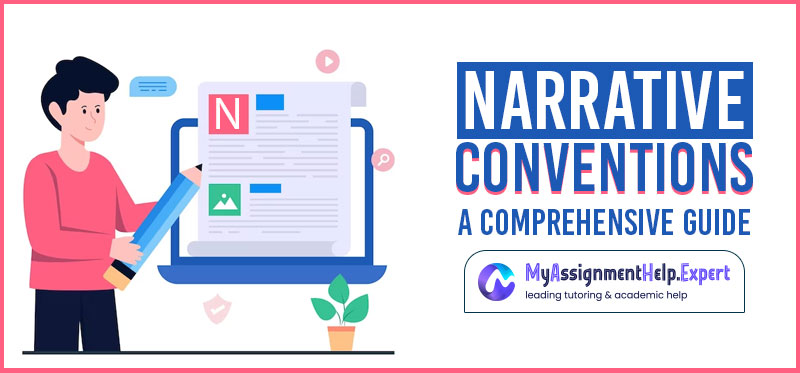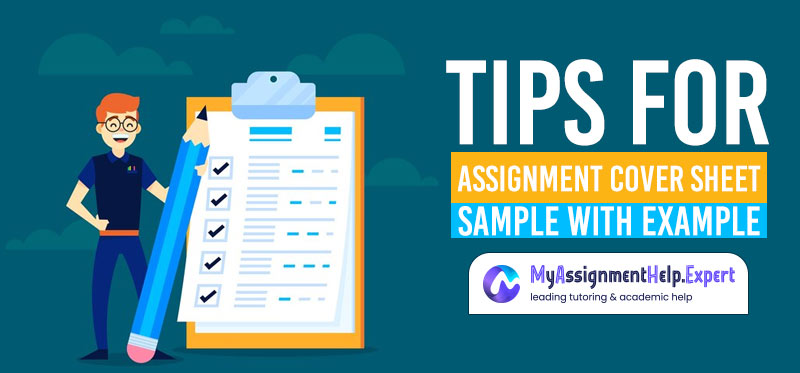Narrative Conventions – A Comprehensive Guide

Storytelling is an art; not everyone has the skills to deliver it with conviction. Generally, when narrating a story, each author has their unique style and method to make the story more engaging using different narrative conventions. Now, do you know what narrative conventions are? How to use conventions in writing?
No? This blog is what you need. In the following paragraphs, we will discuss everything you need to know, from the narrative conventions meaning to use different conventions of narrative for storytelling.
What are Narrative Conventions?
Narrative conventions are techniques used for story narration and connecting events in a story to make it meaningful and engaging. Knowing the narrative conventions list is essential as it is the base of any form of narrative writing and provides a contextual flow to understand the points better. There are two key sides of narrative conventions: primary narrative conventions and secondary narrative conventions.
Primary Narrative Conventions
As for the primary narrative conventions meaning, these are the methods to directly impact the literary content, including elements like theme, plot development, characters, descriptive language, characterisation and point of view.
- Theme: Core focus, motifs and symbol
- Plot Development: Denouncement, complication, exposition, falling tension, climax
- Characters: Protagonist and antagonist
- Descriptive Language: Imagery, figurative language
- Characterisation: Appearance, interaction and relationships, behaviour, dialogues
- Setting: Period setting, destination setting
- Point of view: First person, second person, third person
- Conflict: Against a person, against the society, against one’s self, and the environment
Secondary Narrative Conventions
Secondary narrative conventions are also techniques used for making an impact but not through literary content. Let’s take a look at some common secondary narrative conventions.
- Tone: It is referred to an author’s attitude towards a particular issue. Sarcastic, bossy, depressed, ecstatic, frightened, and excited are a few examples of tones.
- Voice: The voice is from where a story is told. This specific narrative convention helps in setting a scene’s tone and mood, which helps to create a desired effect on the target readers.
- Mood: It refers to the feeling or ambience the author tries to create for the readers. The usual types of moods are anger, joy, anxiety, and calmness.
- Character development: It is the process of developing a character’s depth and personality and setting clear intentions. It also refers to the changes a character goes through due to some action or situation.
Narrative Conventions List for Literature – Explained
SETTING IN NARRATIVE
The first element in our primary narrative conventions list is the setting. Setting in a narrative are of two types:
· Time setting is a timeframe during which a story is set. It could be a particular time of the day or season or a historic time
· The place setting is the place where the story is based. Writers use different locations to portray the setting of their story. It can be a meadow, field, kitchen, playroom, or anyplace else.
Settings are one of the most important conventions of narrative and act as the backbone of a story. It can influence a story, theme, characters, and the overall narrative and bring all elements together properly without overwhelming the target readers. In short, the setting binds readers to a story.
PLOT DEVELOPMENT
Developing a story’s plot consists of different stages:
· Exposition or Orientation: The first stage of narration is where a reader is introduced to different characters and settings and gets a hint of future events.
· Complication: In this narration stage, a conflict occurs due to the disturbance of the status quo.
· Climax: The climax is usually the turning point of a story, which can be good or bad for the protagonist.
· Falling Tension: This stage directs the audience towards the end of the narration and discloses the clash between the antagonist and the protagonist.
· Denouement: The last stage of the narrative where everything is summed up. All questions are answered in this section so readers are satisfied with the ending. Sometimes, authors give abrupt endings so readers can ponder the narrative.
CONFLICT
Conflict is a narration’s fight or differences between two or more characters. The conventions in writing cover different types of conflict, like the following.
· Man against man: Such conflicts create hatred between two characters and can be direct or indirect. Direct conflicts are usually demonstrated through fights, while indirect fights are described through intentions for fellow characters.
· Man against society: Such conflicts arise when the protagonist stands against someone or a wrong practice, like fighting against racism or for equal rights. This type of conflict usually occurs when someone is unhappy with societal norms or forcefully made to follow inhumane rules.
· Man against himself: This type of conflict is known as an internal conflict, where the protagonist fights against their own challenges and weaknesses and chooses between right and wrong.
· Man against nature: Such conflicts occur when the protagonist cannot achieve their goal or target due to obstruction by natural forces.
POINT OF VIEW
The point of view of narrative conventions is namely three types:
- First-person: In the type of conventions of narrative, the story is viewed from the protagonist’s perspective. The readers clearly understand the protagonist’s feelings, experiences, desires and conflicts. For such narrations, writers generally use ‘I,’ or ‘me,’ and ‘we’ or ‘us’ to state a point.
- Second person: Such narrations are done by the narrator addressing the readers using ‘You’ as the main pronoun.
- Third person: In such narration, the narrator is not a character in the story but a different entity altogether. The narrator here is omniscient, aware of everything and is present everywhere. S/he has complete knowledge about each character, event, time, and place and uses ‘they’, ‘he,’ ‘she’, and ‘them’ as third-party narrations.
CHARACTERS
Even though characters are defined with various terms, the two most common types are the protagonist and the antagonist.
- Protagonist: The protagonist is the central character of a story around which the story revolves. Throughout the narration, the protagonist makes several decisions and later faces their consequences. Readers often relate with the protagonist in several instances.
- Antagonist: An antagonist is a villain in the story who stands against the protagonist and has opposite views and personalities that of the protagonist. Most times, an antagonist is engaged in harming the protagonist or the plot.
DESCRIPTIVE LANGUAGE
Descriptive language is the best way to increase audience engagement with the text. It evokes the reader’s emotions and provides various meanings to a text, inviting different interpretations and perceptions.
- Imagery: It uses vivid language to describe a scene, an action or an individual. Narrators use imagery or metaphorical language to create images in readers’ minds.
- Sensory Imagery: Such languages are used to provoke a reader’s senses like smell, sight, taste, touch and hearing.
- Figurative Language: A writer uses words, phrases, or sentences with a different meaning from the literal meaning to draw comparisons between things or emphasise something. To explain a text, writers use poetic devices like hyperbole, metaphor, simile, and personification.
For instance, a simile is used to compare two things using ‘like’ or ‘as,’ while a metaphor is used to draw direct comparisons. Personifications give non-living things human characteristics, while hyperbole is exaggerating something to make a point.
THEMES, SYMBOLS, AND MOTIFS
· Theme: A theme can be summed up as the main subject on which the story develops. It could be anything like a relationship theme, background difference theme, cultural difference theme, etc.
· Symbol: A symbol represents a place, person, or object with a particular meaning. It highlights the theme of the text and allows the readers to understand the story from a different perspective.
· Motifs: Motifs are recurring elements with a symbolic importance in the story.
CHARACTERISATION
Characterisation is a way of creating a bond between the characters and the target readers. The two primary types of characterisations are:
- Direct characterisation: Here, the writer directly tells the readers about a character and their personality.
- Indirect characterisation: In indirect characterisation, the author provides different information about a character and leaves it to the readers to form their own opinion.
Several ways are used to build a character in a story. Some of these include the following:
- Appearance: One can learn a lot about a character by appearance, including attitude, personality, and preferences. Authors use clothing, posture, walking style, and hairstyle to interpret as symbols with hidden meanings.
- Behaviour: A character’s behaviour can help you learn about their true intentions in the story. The way s/he reacts to different situations tells a lot about a specific character’s personality.
- Dialogues: Dialogues help to portray the society on which the story was based. The dialogue also shows the characters’ values, emotions, race, education, culture, and attitudes.
- Thoughts/Feelings: These help determine a character’s beliefs, fears, and insecurities.
- Relationships & Interactions: A character’s strengths and weaknesses are often brought out by their relationship or connection with other characters.
All these primary narrative conventions play a key role in helping one to understand an author’s mindset and literary text. Now, look at the secondary narrative conventions and learn more about them.
The secondary conventions of the narrative of a literary text may affect a reader’s psyche. So here are the main secondary narrative conventions you must know:
MOOD
The mood is the feeling or atmosphere a story creates using imagery and descriptive language. It could be serious, exhilarating, sadness, menace, or other emotions.
TONE
The tone is the manner or voice in which a story is delivered. The tone helps determine whether a character is angry, friendly, proud, or affectionate. An author uses a point of view to set the tone and determine how it should be used in the story. If a story is written from a third-person perspective, the narration will be in a neutral tone. On the contrary, if the story is of first-person narration, you can understand the character’s feelings without giving much thought to the other characters and their perceptions. So, it’s evident how important the role of tone is in literary text.
VOICE
Like an author’s voice, a literary text also contains different voices like ideas, positions, perspectives, and views of all or a specific character. Characters’ voices promote different attitudes, values, and perspectives. Understanding and recognising different voices is important to comprehend the writer’s thoughts and shape your response accordingly.
CHARACTER DEVELOPMENT
Character development plays a vital role in connecting readers with the story. It gives life to the story and keeps the readers engaged. The author uses this narrative convention to make the story more enticing and appealing to readers.
Understanding Different Narrative Techniques
To create an impact with their stories, writers use narrative techniques or conventions in writing. Below are some commonly used narrative conventions or techniques:
SELF-NARRATIVES
Self-narratives are usually characterised by the author or a character using their voice for story narration. S/he may use ‘I’ to refer to themselves in the story but may not be the main character. Due to this, the narrator may or may not have a clear idea about the actions revealed in the story. Generally, this technique is used to write novels, personal diaries, and memoirs.
THIRD-PERSON NARRATOR
The author narrates the story in the third person using names or pronouns like ‘he,’ ‘she,’ or ‘they.’ A third-person narrator does not reveal all information related to the past or the present. The author uses the third person to communicate with the target readers directly.
HISTORICAL STORIES
With this type of technique, the narrator tries to deliver information about different manners and conditions from past events. These historical facts are based on the lives of real people with relevant fictional characters and incidents. The common genres that use this technique are mysteries, sagas, fantasy, historical research, series, and periodic romantic fiction.
AUTOBIOGRAPHICAL NOVELS
Autobiographical writing revolves around the author’s life. All characters are based on their real-life friends, colleagues, and acquaintances. The writer uses auto-fiction techniques in case the requirements don’t meet true data and events.
Key Elements of Narrative Conventions or Techniques
Here are a few key elements of narrative conventions you must remember:
- Get into the character
Fiction writing is about developing characters into something like real-like just a movie actor prepares to develop his character for a role. Understanding every character’s background, relationships, fears, weaknesses, interests, and other important details will help the writer with the story. Moreover, the writer will also understand how the character appears, speaks, looks, and how others perceive him to form a major idea of what he wants to accomplish with the story.
- Build a structured foundation
It’s important to form a strong foundation for the plot. There are two pillars of a plot. The first one is the main character who introduces the story, and the second pillar comprises the actions and characters that give motion to the story.
- Developing a scene
Dialogues, story, and action are key elements of a scene. Scenes give life to stories and help readers feel imagery scenes, relate to characters, and give appropriate responses. Most important scenes are saved for action and plot development, while less important scenes are explained in short.
- Make a quality setting
The setting is the most important element of the narrative technique and helps to establish the place, time, and environment in which the narrator and the characters will perform. The setting will differentiate between the story being impressive or vague.
- Point of view
With this element, the reader can understand the purpose or desire for writing the story. Building a persistent point of view is important for meeting the overall goal of the story.
- Theme & Conflict
The theme helps a narrator to stick to a particular narration. A clear understanding of the theme will help the writer to connect with the readers.
Finally, conflict helps in character motivation. The narrator should identify how the conflict inspired the story. Conflict will build empathy in readers for the narrator and characters and help them understand and enjoy the story’s intricacies.
Narrative Conventions Examples
Three popular narrative conventions examples are imagery, hyperbole, and personification.
- Imagery: Creates an appealing vision for readers and allows them to visualise things and feel the prospects by bringing sensory perceptions.
e.g., “It was a quiet and gloomy night.”
- Hyperbole: The author uses hyperbole to help readers identify the feelings and impressions the reader should emphasise.
e.g., “I have a thousand miles to go.”
- Personification: It is used to give human characteristics to a non-human being.
e.g., “My lawn is a real beauty.”
Narrative Story Examples
Here are two widely popular narrative story examples for your reference.
Example 1: “Goodbye to All That” by Joan Didion
This piece is included in Didion’s essay collection, Slouching Towards Bethlehem, which delves into emotions the author felt while leaving New York to embrace the journey of self-awareness.
“I was in love with New York. I do not mean ‘love’ in any colloquial way; I mean that I was in love with the city, the way you love the first person who ever touches you and never loves anyone quite that way again.”
Example 2: “Self-Reliance” by Ralph Waldo Emerson
Ralph Waldo Emerson is a well-known American essayist reputed for his outstanding narrative writing skills. His works are considered among the best of the 19th century.
“My life is not an apology, but a life. It is for itself and not for a spectacle. I much prefer that it should be of a lower strain, so it is genuine and equal than that it should be glittering and unsteady.”
With that, we end our write-up about narrative conventions and their importance in literary writing. Having a strong understanding of the narrative conventions will allow you to create a strong piece in an engaging manner to hook your readers. In case you are unsure about accurately using the narrative conventions, you can always connect with scholarly writers for comprehensive guidance.
Frequently Asked Questions
What Are Some Common Narrative Conventions?
The most widely used narrative conventions are the following:
- Character
- Plot
- Point of view
- Setting
- Style
- Theme
How Do Narrative Conventions Contribute To A Story?
Narrative conventions are used for narrating a story and connecting different events. Simply put, narrative conventions play a significant role in conveying certain information using the right techniques and making it engaging for the readers. Folk tales, novels, poetry, short stories, dramas, and fables are common narratives.
Can Narrative Conventions Vary Across Different Genres?
Narrative conventions are suitable for different genres. For instance, romance can stand alone as a specific genre but can also be used with other genres. However, genre conventions work best when working exclusively inside the chosen genre.
What Is The Role Of Conflict In Narrative Conventions?
The main purpose of conflict in narrative conventions is to create tension in the plot and make things uncertain for readers to guess which characters will survive till the end.
How Do Narrative Conventions Affect The Reader’s Experience?
Narrative conventions play a significant role in readers’ experiences because they shape how they understand and perceive the story and characters. Using narrative conventions, the author can help readers view the story from different perspectives and answer the possible questions.
Are Narrative Conventions Limited To Written Stories?
Narrative conventions are literary devices used to narrate events through art. No, these techniques are not limited to written stories and are used for delivering narrative pieces in spoken form, too.






